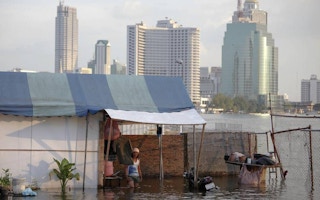Urban planners and authorities in fast-expanding Asian cities are increasingly turning to unused land underneath bridges, flyovers and viaducts to create much-needed public spaces.
With rapid urbanisation, a construction boom in South and Southeast Asian cities is resulting in more offices, houses and apartments, as well as bridges, flyovers and tunnels—which has created so-called dead spaces.
But as land costs soar and public spaces vanish, these areas are being put to use by planners and city authorities.
“There is land—we just need to use it creatively to benefit people and reduce stress on the environment,” said Yossapon Boonsom, a landscape architect at Shma, an architecture firm in Bangkok.
“
Activating these sterile spaces at a low cost can encourage entrepreneurs and planners to test out new and unconventional ideas.
Tan Boon Khai, chief, Singapore Land Authority
About 40 per cent of the 1.8 million square metres (0.69 square mile) of land under Bangkok’s expressways is unused, he said.
Shma has a plan to convert land under the Sirat Expressway into parks and recreational spaces, connected by a 10 kilometre (6.2 mile)-long bicycle path.
Their “10 km Project” won a prize in the smart cities category at the World Architecture Festival in November.
“Bangkok is a very dense city. Opening up these unused spaces to increase connectivity to parks and canals can encourage more people to walk and bicycle,” Yossapon told the Thomson Reuters Foundation on Wednesday.
Other Asian cities show it can be done. In Hong Kong, an architect created micro homes in concrete water pipes that can be stacked under flyovers.
Near Mumbai, a school for street children was created in a container that was placed under a flyover, while in the Indonesian city of Bandung, the space under a flyover was turned into an outdoor cinema.
In Singapore, authorities asked the public for ideas on how to revitalise about 60 hectares of dead land.
The spaces, measuring 3,000-6,000 square metres each, have been converted into sports facilities, urban farms, and even used for markets and birthday parties, according to a report published last year by the Singapore Land Authority (SLA).
“While land is scarce in Singapore, we do have a good number of sites under viaducts and flyovers,” Tan Boon Khai, SLA’s chief executive, said in the report.
“Activating these sterile spaces at a low cost can encourage entrepreneurs and planners to test out new and unconventional ideas,” he added.
But these spaces are often used by the homeless and migrant workers who cannot afford housing, and taking them over would leave them vulnerable, said Shivani Chaudhry, executive director of advocacy group Housing and Land Rights Network in New Delhi.
“When the space under the flyovers is the only available space in the city for the homeless, to displace them from those spaces without providing an alternative is cruel,” she said.
“They have no option then but to sleep on the road side, making them more vulnerable to extreme weather conditions, pollution, and road accidents.”
This story was published with permission from Thomson Reuters Foundation, the charitable arm of Thomson Reuters, that covers humanitarian news, women’s and LGBT+ rights, human trafficking, property rights, and climate change. Visit http://news.trust.org








